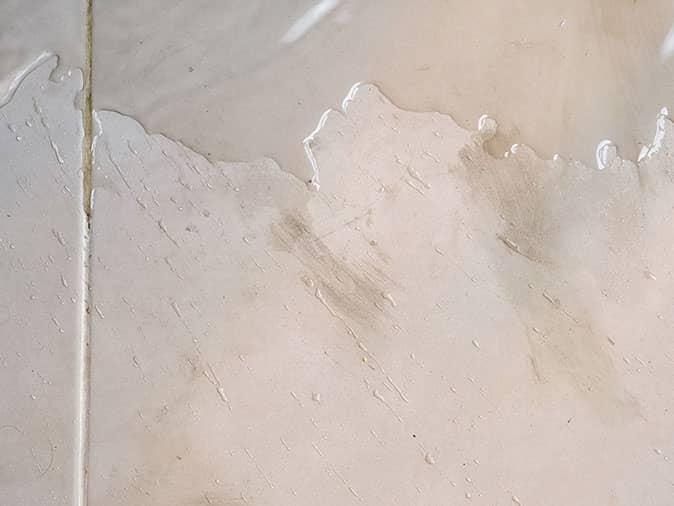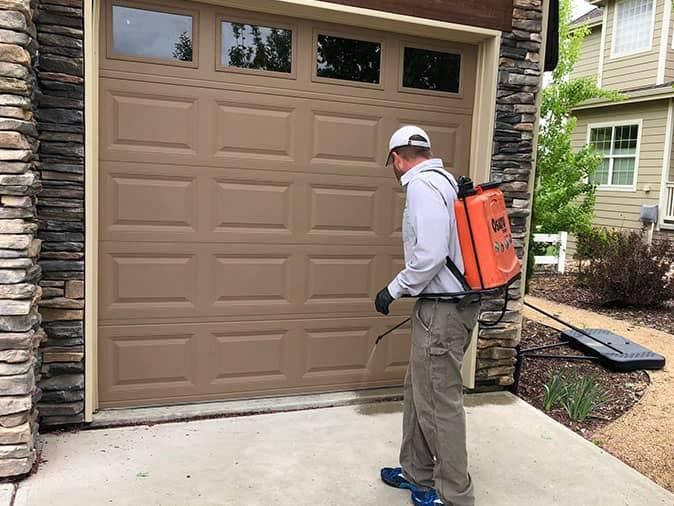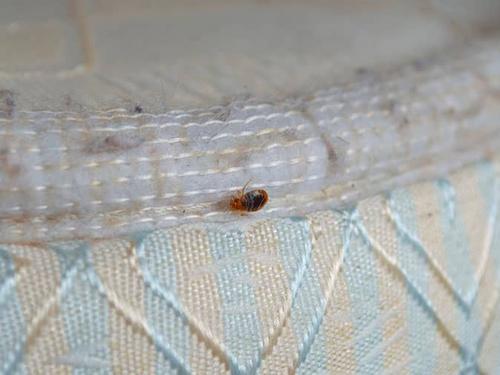Ants In The Bathroom
Dealing with ants in the bathroom can be a frustrating and perplexing issue for many Colorado homeowners. Figuring out how these bugs got into your loo and what drew them in can be puzzling. In this blog post, we will delve into the reasons behind ant infestations in bathrooms and share a little insight on how to prevent this issue from occurring (or re-occurring as the case may be).

Common types of ants found in Denver, Boulder, Colorado Springs & NoCo
In order to effectively tackle ants in the bathroom, it is important to identify which species of ant is infesting your home. Some of the most common types of ants in Colorado include:
- Pavement Ants: These small black or brown ants are often seen on sidewalks and driveways but can also find their way indoors (and even into bathrooms) while foraging for food.
- Carpenter Ants: Larger than pavement ants, carpenter ants are usually black or reddish-brown and known for causing structural damage by tunneling through wood. Also, carpenter ants love moisture!
- Sugar Ants: These brownish-orange ants are a rather tiny species but can cause big headaches when they pop up in bathrooms and other parts of homes.
What attracts ants to bathrooms?
Ants are attracted to bathrooms for a variety of reasons, including sources of food and water, warmth and moisture, and poor sanitation practices. Understanding these factors can help homeowners take preventive measures against ant infestations in their bathrooms.
- Food & water sources
Ants are constantly on the lookout for food sources to sustain their colonies. In a bathroom setting, they may be drawn to leftover toothpaste residue or soap scum that contains sugar or other sweet substances. Additionally, ants need water to survive; therefore, any standing water from leaky faucets or puddles around sinks or tubs provides an ideal environment for them to thrive. - Warmth & moisture
As you might expect, bathrooms tend to have higher levels of humidity due to steam from showers and baths as well as damp towels left hanging up (or thrown on the floor) after use. This warm, moist environment is perfect for ants who prefer dark spaces with high humidity levels like those found under sinks or behind toilets where pipes provide both shelter and moisture for nesting purposes. - Poor sanitation practices
Maintaining cleanliness is crucial in preventing ant infestations. Poor sanitation practices such as missing the strip behind the toilet, not mopping regularly, or even allowing toothpaste or soap scum to build up in sinks and showers can draw ants to bathrooms. Additionally, cluttered spaces provide ideal hiding spots for these pests to establish their colonies unnoticed.
Signs of an ant infestation in the bathroom
If you suspect that there might be an ant infestation in or near your bathroom or elsewhere in your home, keep an eye out for some telltale signs such as:
- Finding live or dead ants around sinks or bathtubs
- A trail of worker ants leading from cracks/crevices towards food sources
- Detecting sawdust-like material near wooden structures
These signs can help you confirm that there is indeed an infestation and take appropriate action to eliminate the ants from your home.
Reasons for increased ant activity in the spring
The warmer temperatures of spring provide ideal conditions for ants to become more active, both outdoors and indoors. As temperatures rise, the availability of food sources encourages ants to forage further afield. This increased activity often leads them into homes through various entry points such as cracks or gaps around windows and doors. Additionally, the moisture from melting snow can create damp environments that attract certain ant species like carpenter ants.
Unfortunately, it’s also entirely possible they spent the winter in your home and are “waking up” now that it’s warmer. Either way, spotting ants in your bathroom or in other rooms of your home is quite common each spring.
How do ants get inside?
Ants easily find their way into Colorado homes through various entry points including, but not limited to:
- Cracks and openings on the exterior of the house
Small openings and gaps provide easy access for ants and other pests to make their way inside, especially if they lead to a moisture-rich environment like your bathroom. - Open doors & windows
An open door or window might seem harmless enough, but it could be inviting unwanted guests like ants into your home. Even if you have screens installed on windows, ensure there are no tears or holes that would allow insects to pass through freely. Keep doors closed when not in use, particularly during warmer months when ant activity increases and pay attention to gaps between doors and floors. - Poorly sealed entry points
Pipes, vents, and other utility lines can create gaps in your home's exterior, providing easy access for ants to enter.
Tips for keeping ants out
To keep ants out of your bathroom and away from your home, the local pest control pros at EnviroPest recommend the following prevention tips:
- Maintain proper sealing around doors by installing weatherstripping and/or door sweeps
- Repair damaged window screens
- Regularly clean surfaces where food or water may accumulate
- Seal any cracks or crevices in walls, floors, windows, and doors
- Repair leaks, replace water damaged wood, and correct moisture issues
If you’re struggling with ants in the bathroom, contact EnviroPest today!
Whether you’ve already noticed ants in the bathroom, past history tells you they’re likely to show up soon, or you simply want to be proactive, EnviroPest can help! Available in Denver, Boulder, Colorado Springs, and Northern Colorado, our home pest control services are the best way to ensure that ants don’t have the chance to infest your home. What’s more, because our Colorado’s Choice Smart Service is a year-round pest solution, you can rest easy knowing that our team of specialists will make sure other insects and even rodents don’t become a pest in your home!
Colorado's Choice SMART Service
- Year-Round Pest Protection
- 4 Seasonal Services
- Covers 30+ Pests
- Free Re-Treat Service
- Rodent Control
- 24/7 Digital Rodent Monitoring

Colorado's Choice Smart Service
Our Colorado's Choice Smart Service is the most comprehensive home pest control plan EnviroPest targets 30+ pests and includes four seasonal visits and 24/7 digital rodent monitoring.
Pests covered under the Colorado's Choice Smart Service includes:
- Ants (Carpenter ants, odorous house ants, pavement ants, sugar ants)
- Beetles
- Centipedes
- Earwigs
- Mice
- Rats
- Spiders (House spiders, rock spiders, wolf spiders, black widow spiders)
- Wasps (Baldfaced hornets, paper wasps, yellow jackets)

Testimonials
GETTING STARTED IS AS EASY AS 1-2-3
REQUEST FREE ESTIMATE
Pest Solutions For Homes & Businesses
We understand that pest problems can be unsettling and frustrating, but the solution shouldn't be. For over 55 years, we've been helping folks right here in Colorado take care of ants, spiders, mice, mosquitoes, wasps, bed bugs, bats and most other creepy crawly things. We'll get there fast to solve the issue quickly and affordably - Guaranteed.



